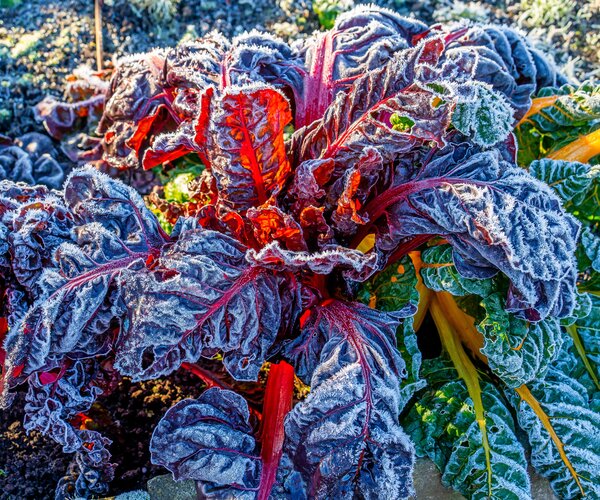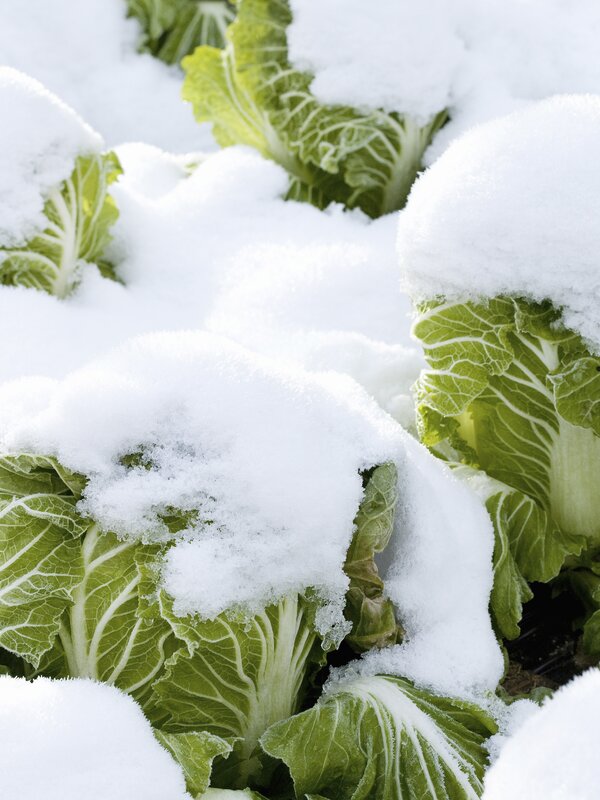
8 tips for a successful winter harvest
Autumn is just around the corner, and most amateur gardeners pack up their tools and say goodbye to the gardening season. But for those who want to enjoy fresh vegetables all year round, growing vegetables in winter is an exciting option. With the right planning and the use of Effective Microorganisms, you can also harvest your own vegetables from the garden in the colder months. We have put together a few tips for you here.

1. Create a good microclimate
An optimal microclimate is crucial to protect your plants from harsh winter conditions. Create protective walls made of wood or reeds around the vegetable patch to keep out cold winds. On the north side in particular, straw bales can be used as a barrier against cold and stormy north winds. These measures will help your plants survive the winter better.
2. Promote root growth and nutrient absorption
Micro-organisms play an important role in promoting root growth, even in the cold season. It is important to water when sowing and planting with Multikraft Roots. In addition, the seeds should be dressed with EM Ceramic Powder. This allows the plants to absorb nutrients from the soil as well as possible, even at low temperatures.
3. Don't forget regular care!
Your plants still need looking after in winter. Check the condition of your plants regularly and remove damaged leaves to prevent disease. Make sure the soil is kept evenly moist, but avoid waterlogging. Although watering should be less frequent, you should still water regularly with Multikraft Roots. This promotes healthy, active soil life. This warms the soil, an additional benefit for good growth in winter.
Your plants still need looking after in winter. Check the condition of your plants regularly and remove damaged leaves to prevent disease. Make sure the soil is kept evenly moist, but avoid waterlogging. Although watering should be less frequent, you should still water regularly with Multikraft Roots. This promotes healthy, active soil life. This warms the soil, an additional benefit for good growth in winter.
4. Mulch layer as a heat store
A mulch layer of leaves or straw acts as a natural insulator in winter and helps to store the soil heat. This effectively protects tubers and roots from frost. However, the mulch layer should be removed again from the end of January so that the stronger sun can warm the soil. Otherwise, the soil could remain cold and inhibit plant growth.
A mulch layer of leaves or straw acts as a natural insulator in winter and helps to store the soil heat. This effectively protects tubers and roots from frost. However, the mulch layer should be removed again from the end of January so that the stronger sun can warm the soil. Otherwise, the soil could remain cold and inhibit plant growth.
5. Protection with fleece and mini-tunnel
Fleece is a particularly good choice for carrots, as it retains the soil heat. Although a fleece covering does not keep out the rain, it does ensure that the soil heat is retained. A low-cost mini tunnel, which can be well ventilated at the sides, is also a good option. Cold frames are ideal for winter lettuces, but should always be left slightly open to ensure good ventilation.
6. Prevent fungal diseases
Too much moisture in winter can encourage fungal diseases. To avoid this, plants under a covering should be well ventilated. Regular spraying with Multikraft Plants also prevents fungal diseases and ensures resilient plants.
7. Don't touch frozen plants!
Frost can severely damage plants in winter. To protect themselves, they store sugar, proteins and amino acids in their cells to prevent the formation of ice crystals. This means that they stay fresh and crisp after thawing. Important: Frozen plants should not be touched or harvested, as this can damage the plant tissue.

8. Planting and sowing for a successful winter harvest
Planting and sowing at the right time is crucial to a successful winter harvest. Here is an overview of which crops can still be sown and planted now and when you can expect to harvest them:
Give it a try and look forward to crisp winter vegetables from your own garden!
